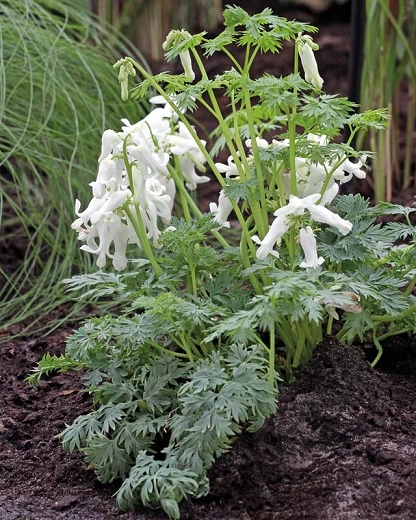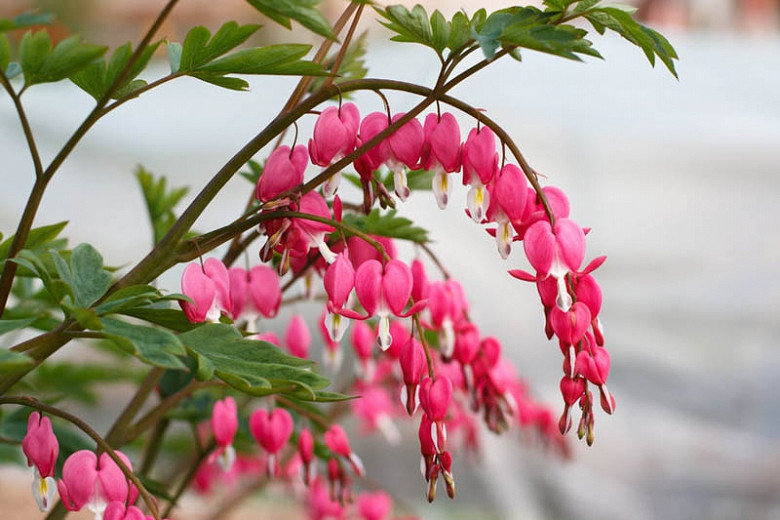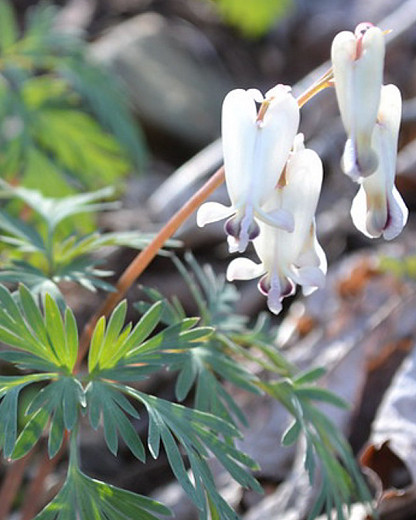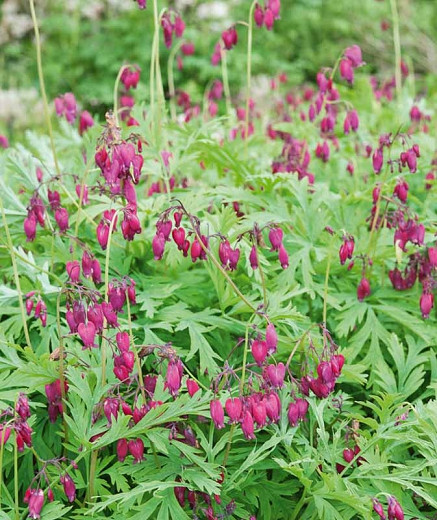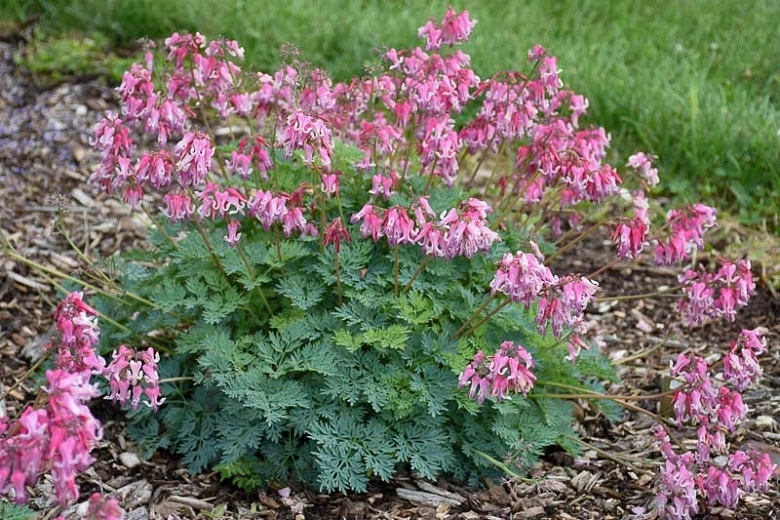Dicentra formosa Ivory Hearts (Pacific Bleeding Heart)
Dicentra formosa ‘Ivory Hearts’ (Pacific Bleeding Heart) is a compact, mound-forming, rhizomatous perennial adorned with a blue-green, finely divided foliage and short racemes of nodding, heart-shaped, creamy-white flowers. Blooming in late spring, the dainty flowers dangle gracefully above the lush foliage mound. In cool northern summer climates, flowering will continue throughout the summer.
Dicentra formosa 'Ivory Hearts' (Pacific Bleeding Heart) is a compact, mound-forming, rhizomatous perennial adorned with a blue-green, finely divided foliage and short racemes of nodding, heart-shaped, creamy-white flowers. Blooming in late spring, the dainty flowers dangle gracefully above the lush foliage mound. In cool northern summer climates, flowering will continue throughout the summer. In warmer summer climates, flowering will stop in the heat of the summer and may start again in late summer to early fall. Ivory Hearts is noted for its extended bloom period, particularly in cool summer climates. Given adequate moisture, the foliage remains attractive in summer, and may produce an attractive ground cover.
- Grows up to 8-10 in. tall and wide (20-25 cm). Unlike Common Bleeding Hearts (Dicentra spectabilis), it will not go dormant in midsummer as long as the soil is kept moist.
- Thrives in part shade and is easily grown in fertile, humus-rich, neutral or slightly alkaline, moist, well-drained soils. It is full shade tolerant but be aware that too much shade will result in few flowers. It can be grown in full sun in the coolest part of its range provided the soil is kept consistently moist.
- Great for beds and borders, cottage gardens or underplanting shrubs.
- No serious pest or disease issues. Keep an eye out for slugs. Deer and rabbit resistant.
- Propagate by division or root cuttings.
- If ingested, all parts may cause stomach upset, the foliage may aggravate skin allergies. Wear gloves and other protective equipment when handling. Bleeding Heart plants are not only toxic to humans but animals as well. Although aesthetically pleasing, this plant contains soquinoline alkaloids. Alkaloids negatively affect animals, most commonly cattle, sheep, and dogs.
Requirements
| Hardiness | 3 – 8 |
|---|---|
| Heat Zones | 1 – 8 |
| Climate Zones | 1, 1A, 1B, 2, 2A, 2B, 3, 3A, 3B, 4, 5, 6, 7, 8, 9, 14, 15, 16, 17, 18, 19, 20, 21, 22, 23, 24 |
| Plant Type | Perennials |
| Plant Family | Dicentra – Bleeding Hearts |
| Exposure | Partial Sun, Shade |
| Season of Interest | Spring (Late)Summer (Early,Mid,Late)Fall |
| Height | 8" – 10" (20cm – 25cm) |
| Spread | 8" – 10" (20cm – 25cm) |
| Spacing | 10″ – 15″ (25cm – 37cm) |
| Water Needs | Average |
| Maintenance | Low |
| Soil Type | Chalk, Clay, Loam |
| Soil pH | Alkaline, Neutral |
| Soil Drainage | Moist but Well-Drained, Well-Drained |
| Characteristics | Cut Flowers, Showy |
| Tolerance | Deer, Rabbit |
| Attracts | Butterflies |
| Garden Uses | Beds and Borders, Underplanting Roses and Shrubs |
| Garden Styles | Informal and Cottage |
